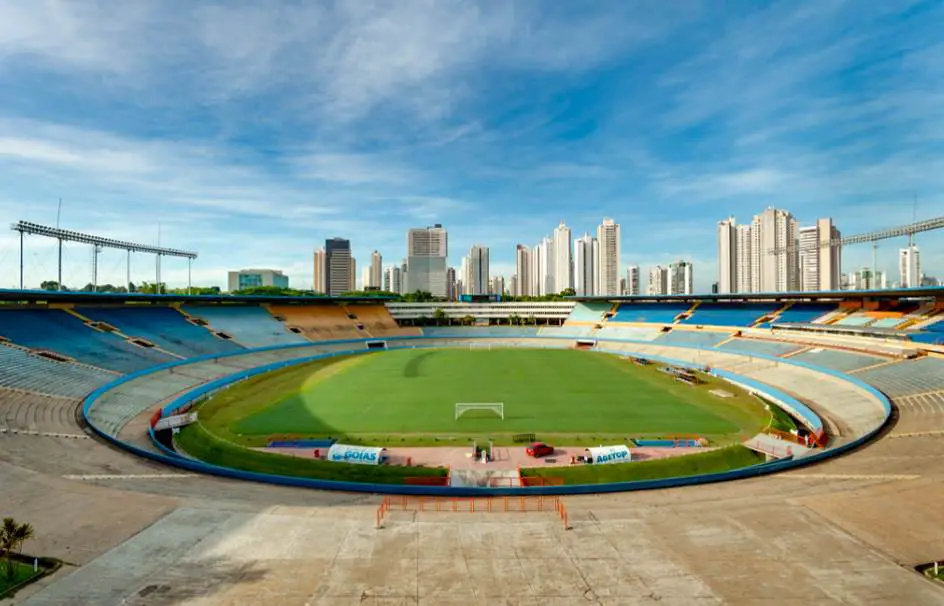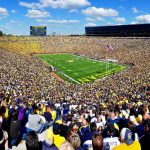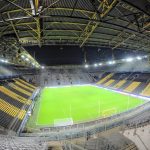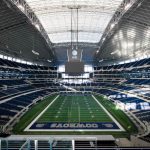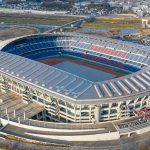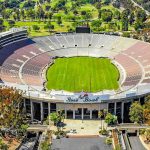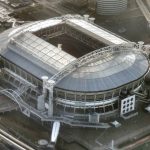There are very few countries in the world where association football is more popular than in the largest country in South America.
Brazil has an extensive history of producing amazing football players, including absolute legends such as Pele, Ronaldo, and Ronaldinho, to name just a few.
Brazilians sometimes refer to their country as “o País do Futebol” which means “the country of football.” This pretty much explains the level of popularity of the sport.
It’s both the most-played sport and the most-watched sport in the country, and Brazilian football games are played in some of the most amazing and biggest stadiums on the planet.
Let’s take a closer look at some of the biggest stadiums in Brazil.
1. Maracaña Stadium
- Location: Rio de Janeiro
- Capacity: 78,838
Maracaña Stadium isn’t just one of the most famous stadiums in Brazil, it’s also one of the most iconic stadiums in the world. It’s located in Rio de Janeiro and is the centerpiece of a sports complex that also features an indoor arena called the “Maracanãzinho” or “Little Maracaña.”
The stadium is the home of local football clubs Flamengo and Fluminense but is owned by the Rio de Janeiro state government. It’s named after the Maracaña neighborhood of the city in which it’s located, which in turn was named after the Maracaña River that flows through it.
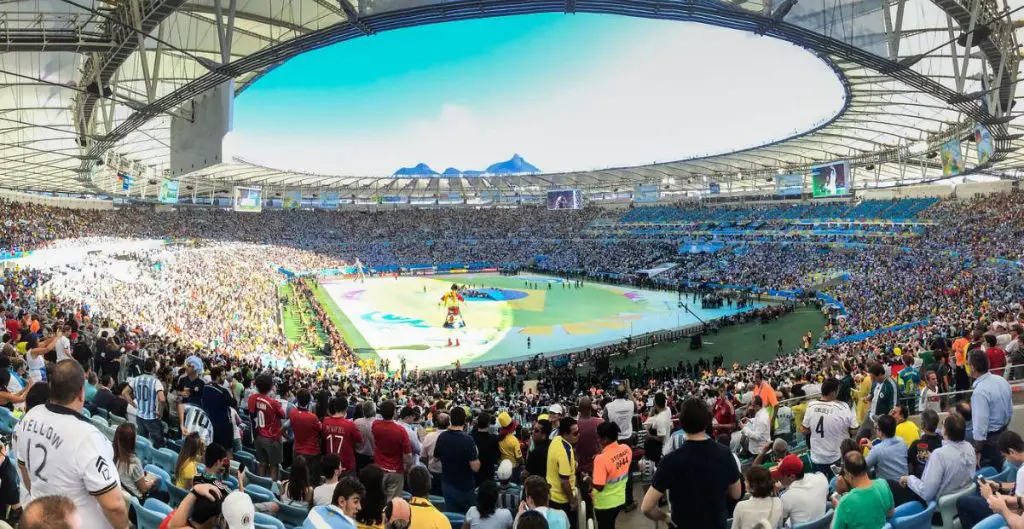
2. Arena BRB Mané Garrincha
- Location: Brasília
- Capacity: 72;788
The Arena BRB Mané Garrincha is an amazingly beautiful arena in the federal capital of Brazil, Brasília. The stadium opened its doors in the year 1976 with a capacity of 45,200 people but was completely reconstructed between 2010 and 2013 for the FIFA World Cup of 2014.
This reconstruction plan raised the capacity to 72,788 and was completed for $900 million. That was quite a bit more than the original budget of just $300 million. Regardless of this slight financial miscalculation, it’s arguably one of the most stunning stadiums in Latin America.
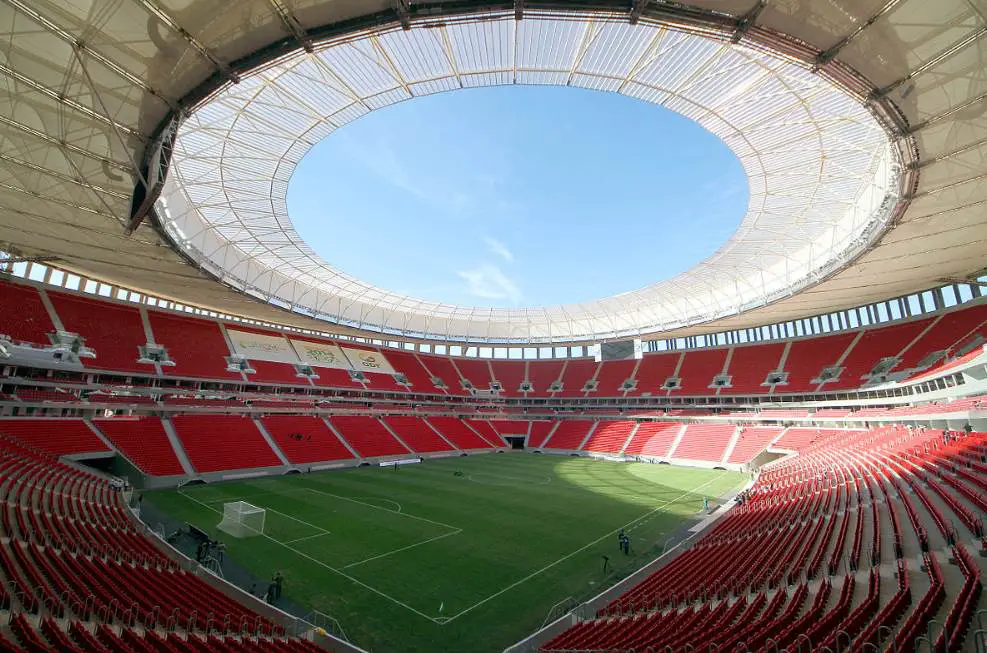
3. Estádio Cícero Pompeu de Toledo
- Location: São Paulo
- Capacity: 67,052
Estádio Cícero Pompeu de Toledo is commonly referred to as “Estádio do Morumbi” or simply “Morumbi.” This is a reference to the neighborhood of the immense city of São Paulo where it’s located. It’s the home of São Paulo Futebol Clube, the local top-flight football club.
Although construction of this arena began in the early 1950s, it wasn’t fully completed until 1960. It has been renovated several times throughout its history. São Paulo FC is one of just 3 clubs in Brazil that have never been relegated from the Série A, the top tier of the Brazilian football league system.
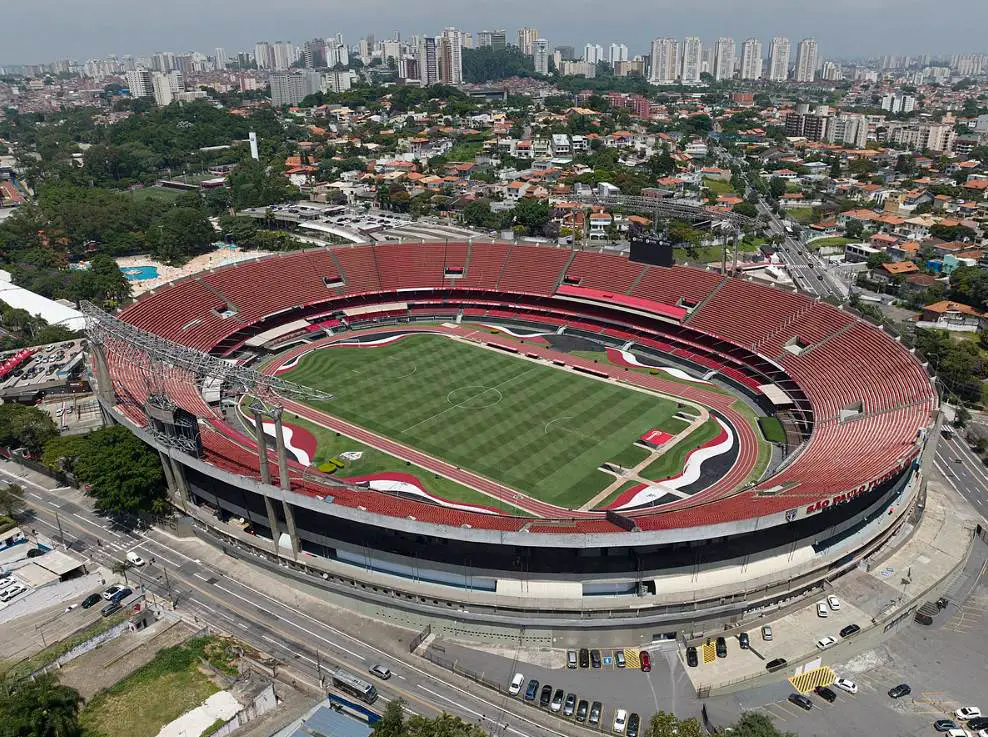
4. Estádio Governador Plácido Castelo
- Location: Fortaleza
- Capacity: 63,903
Estádio Governador Plácido Castelo is commonly referred to as the “Castelão” or “Big Castle” and is sometimes nicknamed “Gigante da Boa Vista.” It was originally constructed between 1969 and 1973 and was renovated in the early 21st century to serve as one of the venues of the 2014 FIFA World Cup.
It’s the home venue of two Brazilian football clubs from Fortaleza, Ceará Sporting Club, and Fortaleza Esporte Clube. The Quarter Final of this tournament between the home country Brazil and Colombia (won by Brazil by 2-1) was played at this stadium.
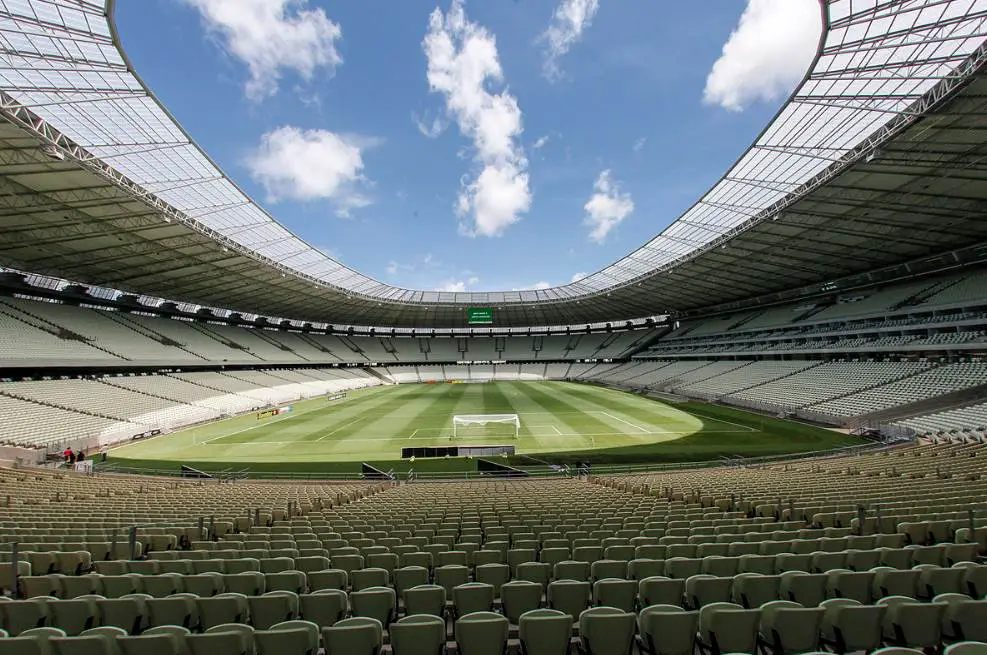
5. Estádio Governador Magalhães Pinto
- Location: Belo Horizonte
- Capacity: 61,846
Estádio Governador Magalhães Pinto is the official name of a stadium that is commonly referred to as “Mineirão.” It was constructed between 1959 and 1965 and is another stadium that was completely transformed into a modern football temple to serve as a venue for the 2014 FIFA World Cup.
The stadium in Belo Horizonte is used by two popular Brazilian football clubs, Atlético Mineiro and Cruzeiro. It was the venue of one of the darkest moments in Brazilian football because Germany beat Brazil here by 7-1 in the Semi-Finals of the World Cup.
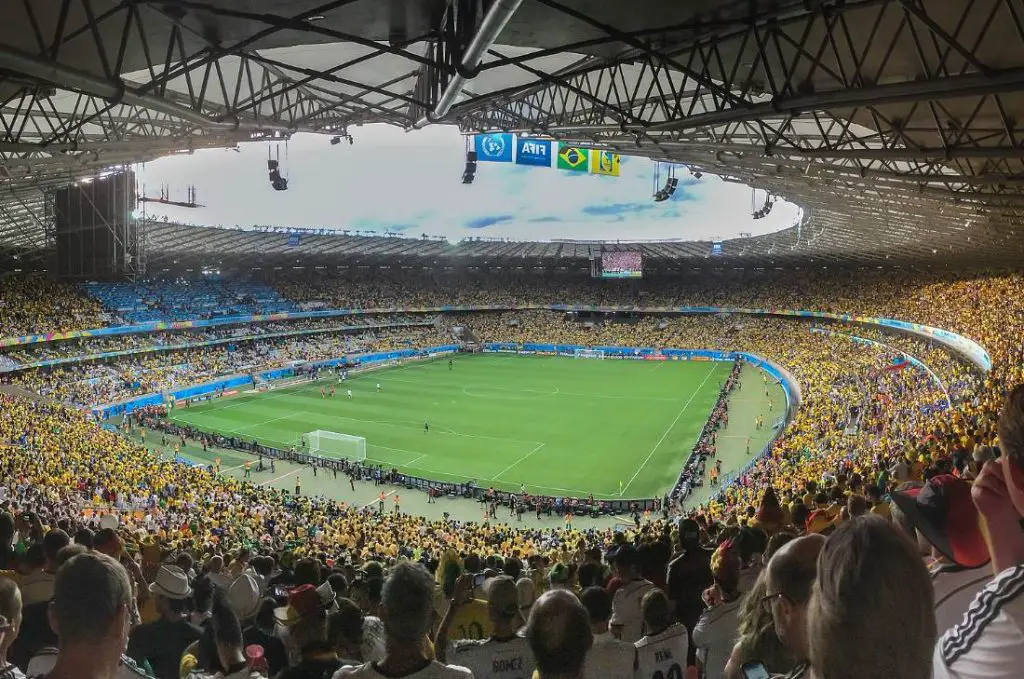
6. Arena do Grêmio
- Location: Porto Alegre
- Capacity: 60,540
Arena do Grêmio is the home stadium of Grêmio Foot-Ball Porto Alegrense, a Brazilian football club simply referred to as Grêmio. It’s a stadium that was specially constructed for the 2014 FIFA World Cup and was completed between 2010 and 2012.
Because it’s relatively new, it’s one of the most modern football temples in Latin America. Grêmio is another football club that was never relegated from the top tier of Brazilian football. They previously occupied the outdated Estádio Olímpico Monumental before moving to their amazing new arena.
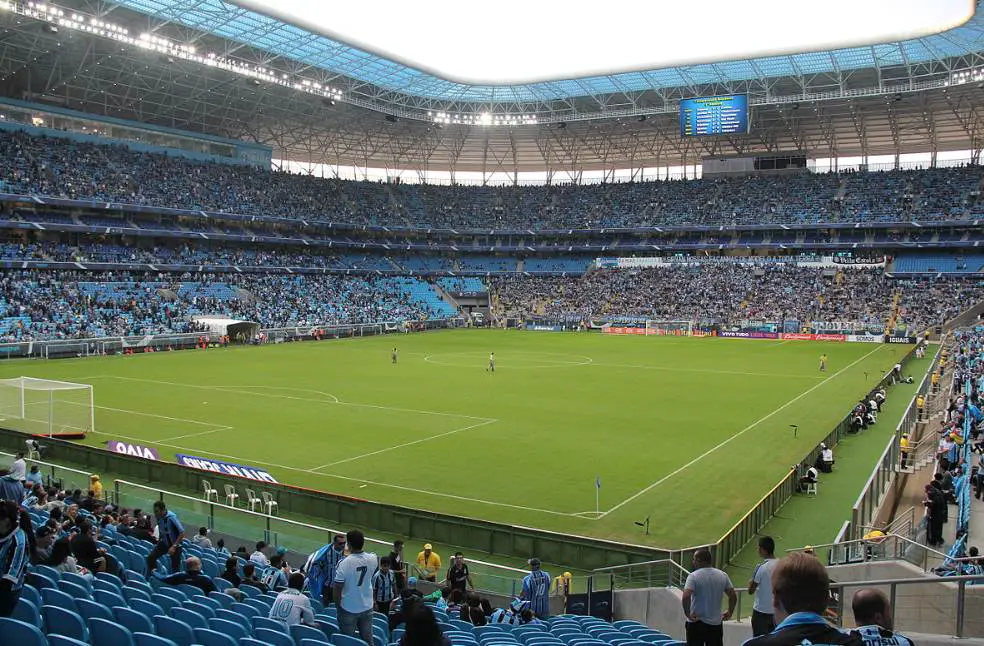
7. Estádio do Arruda
- Location: Recife
- Capacity: 60,044
Estádio José do Rego Maciel is the official name of a stadium in Recife known as Estádio do Arruda. It’s commonly used for football matches and it’s owned by the football club that plays its home matches here, Santa Cruz Futebol Clube.
The stadium opened its doors in 1972 and the high capacity of the stadium makes it a remarkable notion that Santa Cruz Futebol Clube only competes in the Série D at the moment. This is the fourth tier of the Brazilian football system. Despite the poor results in the past, the stadium is often packed for games of the local club.
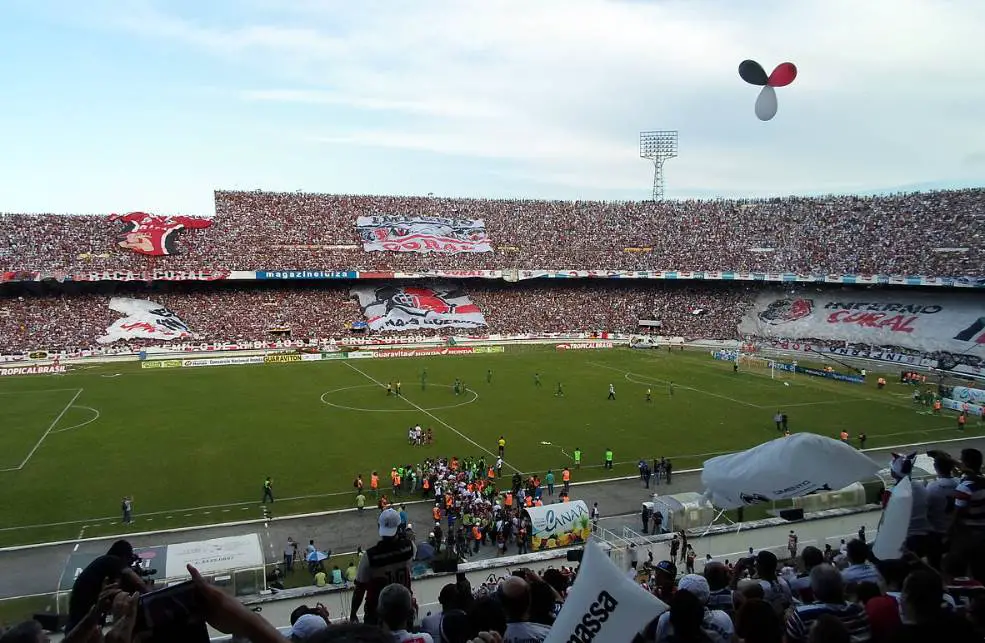
8. Estádio Parque do Sabiá
- Location: Uberlândia
- Capacity: 53,350
Estádio Municipal Parque do Sabiá is locally referred to as “Parque do Sabiá” or “Thrush Park.” A trust is a type of bird that can be spotted here. It’s the home of two local football clubs in the city of Uberlândia called Uberlândia Esporte Clube and Clube Atlético Portal.
The stadium was inaugurated in 1982 and is owned by the Uberlândia City Hall. The Inaugural game was played in front of 80,000 people, a lot more than the official capacity of the arena. Brazil won a friendly game against Ireland by 7-0, and legendary Brazilian football player Falcâo scored the first goal here.
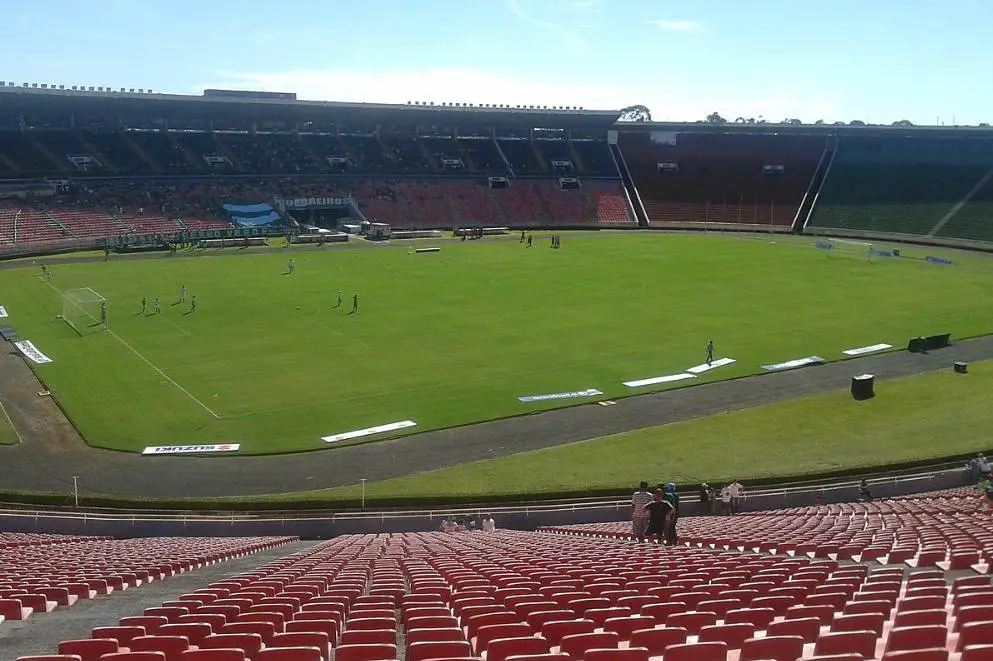
9. Estádio Beira-Rio
- Location: Porto Alegre
- Capacity: 50,128
Estádio José Pinheiro Borda is the official name of a wonderful football stadium in Porto Alegre commonly referred to as Estádio Beira-Rio. It’s located right next to the huge Guaíba River in this city in the utmost southern part of Brazil.
The original version of the stadium was constructed between 1956 and 1969. The renovation that transformed it into a magnificent modern football stadium was completed in 2013 which allowed it to serve as one of the venues of the 2014 FIFA World Cup. The winners of the tournament, Germany, barely won their round of 16 match against Algeria here as they beat the North Africans by 2-1 after extra time.
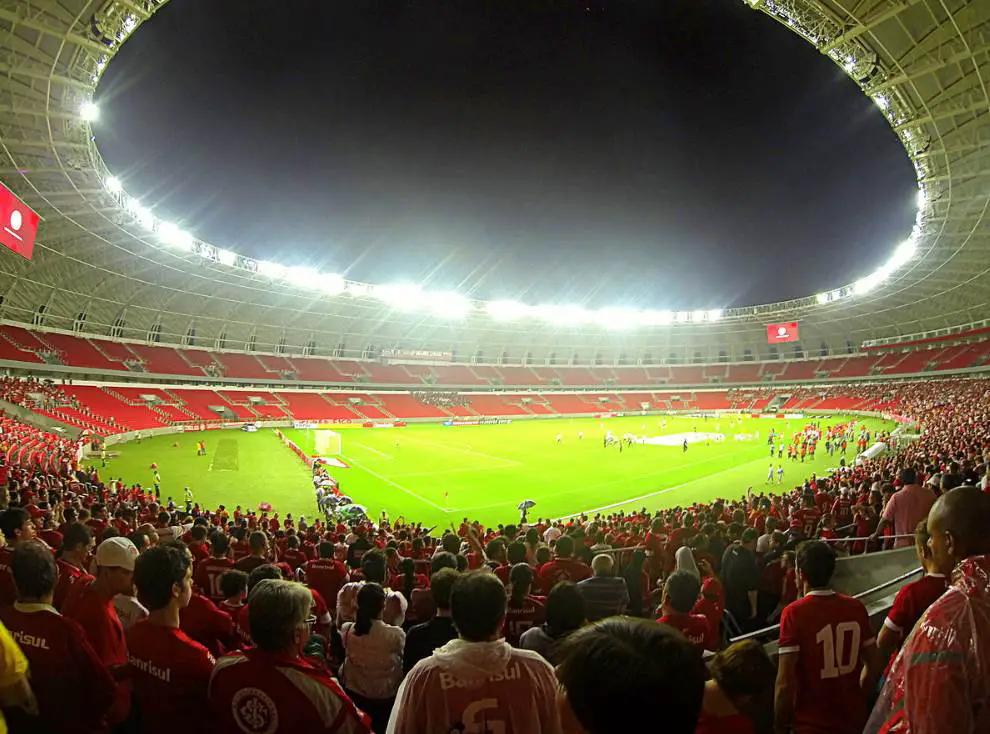
10. Estádio Serra Dourada
- Location: Goiânia
- Capacity: 50,049
Estádio Serra Dourada is a stadium in the city of Goiânia in the Central-West region of Brazil. It’s owned by the Goiás state Government ad is the home venue of one of the 3 local football clubs named Goiás Esporte Clube, a club that competes in the Série A.
There are two other clubs in the city, Vila Nova and Atlético Goianiense, and both have their stadium. Remarkably, whenever there’s a city derby between any of these clubs, they are played at Estádio Serra Dourada. That’s for the simple reason that the capacity of their stadiums is just 11,788 and 9,900 spectators respectively.
